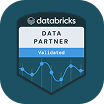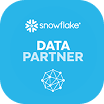How Dynamic Pricing Can Be Used by Retail and E-commerce Brands
Learn how dynamic pricing algorithms can boost profitability, reduce stocking disruptions, and revolutionize business for retailers.


Picture this: You’re shopping for a new pair of sneakers. You find the pair you want for $95 on Amazon but don’t purchase them immediately because you want to compare the prices on other sites.
You look at the same listing 5 days later, and discover the price has quietly jumped to $105, making you feel pressured to buy before it increases even more.
What happened here?
AI-powered dynamic pricing happened—and it’s going to keep happening more and more because it leads to larger profits, more sales, and better stock management for the retailers that use it.
To learn more about how dynamic pricing works, why it’s revolutionizing retail and e-commerce, and how your retail business can implement it, keep reading.
Dynamic Pricing in Retail and E-Commerce: What It Is & Why It’s Important
For most of retail history, pricing was static—businesses set a fixed price for a product that remained unchanged until it was manually updated. This worked when markets moved slowly, and customers had fewer options to compare prices.
However, over the past decade, e-commerce, data gathering, and machine learning have radically accelerated, enabling more dynamic pricing strategies.
In this environment, it’s increasingly expected for retail and e-commerce brands to fluidly adjust prices to accommodate real-time market movements, competitor actions, news events, and supply chain fluctuations.
What Is Dynamic Pricing?
Dynamic pricing is a strategy in which businesses fluidly adjust prices based on factors such as demand, competitor pricing, seasonality, and customer behavior—typically by using automated machine learning algorithms.
How Does Dynamic Pricing Work?
Dynamic pricing uses automated algorithms that process and analyze vast amounts of real-time data, such as competitor prices, sales velocity, stock levels, and external market conditions.
After using this data to determine the optimal price for a product at any given moment, the algorithm changes the price accordingly—without requiring human intervention.
Who Uses Dynamic Pricing, and Why Does It Matter?
Dynamic pricing strategies are widely used in retail, airlines, hotels, ride-sharing companies, and virtually all industries that sell to consumers in digital marketplaces. This is because they’re highly effective at:
- Offering discounts while minimizing revenue loss.
- Capturing customer interest and closing sales.
- Clearing overstock and ensuring maximum profit on limited inventory.
- Capitalizing off fast-acting market trends like viral moments, news events, and economic events.
- Optimizing pricing for different markets, customers, and seasons.
As more businesses use dynamic pricing to stay agile, the brands that don’t use it end up lagging behind competitors who can instantly undercut their prices or capitalize on a trend.
Four Key Factors That Drive Dynamic Pricing
Typically, there are 4 key categories of data that power dynamic pricing algorithms.
Competitor Pricing
Competitor price adjustments, promotions, and even marketing campaigns can all be used to inform the ideal price for each item in your inventory.
Supply and Demand
Fluctuations in supply and demand can be tracked by monitoring the news, customer sentiment, competitor movements, historical sales data, and supply chain disruptions. By using real-time data pipelines and predictive analytics, this data can be aggregated from multiple sources to power effective demand forecasting.
Customer Behavior
General customer sentiment from social media, reviews, and customer service interactions can be tracked and analyzed to inform pricing. Additionally, individual customer behavior, like browsing habits, purchase history, and engagement patterns, can also be used to apply personalized dynamic pricing strategies.
Market Conditions
Dynamic pricing systems can calculate ideal prices using external economic factors like inflation, currency fluctuations, and global supply chain disruptions. They can also track news events, viral trends, weather events, and other forms of alternative data to analyze market conditions more granularly.
The Role of Real-Time Data in Dynamic Pricing
Dynamic pricing is only as effective as the data behind it—a dynamic pricing model that’s fueled by outdated information won’t adequately adjust prices to fit the current market.
This is why dynamic pricing in e-commerce and retail absolutely needs real-time data.
The Problem With Batch Updates & Static Data
Traditionally, retail dynamic pricing systems have relied on static datasets, or data sets that are updated with batch updates on a daily, weekly, or monthly basis.
While incrementally updated data was sufficient to power dynamic pricing software in the past, today’s market simply moves too fast. By the time the update is applied, the market may have already shifted—competitors may have lowered their prices, a new product may have gone viral, or demand for an item may have spiked unexpectedly.
This means businesses that don’t use continuous streams of real-time data face:
- Missed Revenue Opportunities: If a competitor drops their price in the morning and your system doesn’t update until the next day, you could lose sales to lower-priced alternatives.
- Over-Discounting or Underpricing: If demand suddenly surges due to a trending product or news event, businesses using batch updates may still be selling at outdated, lower prices.
- Inefficient Automation: Dynamic pricing algorithms need fresh data to function optimally. With outdated data, automated pricing adjustments become reactive rather than proactive.
How Real-Time Data Solves This Issue
Real-time data pipelines eliminate the delays associated with batch updates by delivering continuously updated pricing intelligence. Instead of relying on yesterday’s numbers, businesses get instant insights into market changes, allowing them to make smarter and more competitive pricing decisions.
With real-time data, businesses can:
- Detect Competitor Price Drops Instantly: Real-time data enables immediate adjustments if a competitor lowers their price.
- Adjust Prices Dynamically Based on Demand Fluctuations: If sales for a product surge due to unexpected trends, businesses can increase prices accordingly.
- Optimize Profit Margins While Maintaining Competitive: Pricing can be adjusted on a rolling basis, ensuring businesses capture the maximum revenue potential without pricing themselves out of the market.
How Real-Time Data Enables AI-Driven Dynamic Pricing
Additionally, the scope, consistency, and richness of real-time data enable fully automated, AI-driven dynamic price adjustments that can autonomously:
- Intake and analyze vast amounts of data.
- Adjust prices immediately.
- Learn from past data and pricing adjustments to refine pricing decisions over time.
…All without any human intervention. This further increases pricing agility and reduces the workload for your data engineering and analysis team.
Use Cases: How Dynamic Pricing Helps Retailers and E-Commerce Brands
Use Case 1: Real-Time Pricing Adjustments for Flash Sales & High-demand Items
Retail and e-commerce businesses traditionally relied on pre-set discount structures for flash sales and high-traffic shopping events like Black Friday.
They applied broad markdowns across entire product categories that remained static throughout the event, which led to lost revenue when prices were set too low or missed sales when competitors undercut prices.
With real-time dynamic pricing, retailers can continuously (& instantly) adjust prices based on live competitor pricing, demand surges, and inventory levels.
Dynamic Pricing Strategy Example: Maximizing Profits on Black Friday
A major electronics retailer is gearing up for Black Friday.
In past years, the company set a flat 20% discount on all items and left prices unchanged for 24 hours. This year, they’ve adopted real-time dynamic pricing powered by real-time data Pipelines.
At 8:00 AM, they notice a competitor has dropped the price of a popular gaming console by $20. Within minutes, their pricing engine automatically lowers their own price by $25, keeping them ahead without manual intervention.
By noon, demand for high-end headphones spikes unexpectedly, depleting stock faster than anticipated. Rather than running out at a discount, their system gradually increases the price in response to demand, maximizing margins on remaining units.
Business Impact
- Maximized profitability during high-traffic sales events by adjusting prices dynamically instead of relying on static markdowns.
- Reduced risk of underpricing or margin loss by ensuring discounts are only as deep as necessary.
- Higher competitiveness by instantly responding to competitor pricing changes.
- Improved inventory management by aligning pricing with demand, preventing stockouts or over-discounting.
Use Case 2: Dynamic Pricing Optimization for Seasonal Inventory Clearance
At the end of major shopping seasons, retailers often face a difficult balancing act—they must clear excess inventory without sacrificing too much profit.
Retailers traditionally dealt with this by applying steep, across-the-board discounts at the end of the season—which did clear out inventory, but also resulted in unnecessary revenue loss.
Dynamic pricing provides a smarter alternative by allowing retailers to gradually adjust prices based on data pipelines that provide real-time sales data and inventory levels.
Dynamic Pricing Algorithm Example: Clearing Out Post-Holiday Stock in the Fashion Industry
A luxury fashion retailer has excess winter coats in early February, at the end of the winter season.
In previous years, they applied a flat 50% discount to all seasonal apparel, leading to rapid sell-through but unnecessary profit loss on items that were still in demand. This year, they use dynamic pricing to manage markdowns more strategically.
As the season transitions, their system monitors real-time demand signals and detects that premium-brand coats are still selling at a steady pace, while mid-tier brands are lagging. Instead of slashing prices on all coats, they gradually discount only the slower-moving items, while keeping prices higher on popular ones.
Additionally, when a competitor suddenly offers a flash sale on a similar jacket line, their pricing engine adjusts select SKUs in real time to match or slightly undercut the competition, ensuring they don’t lose customers.
Business Impact
- Prevents unnecessary revenue loss by applying strategic, data-driven discounts instead of across-the-board markdowns.
- Keeps sales competitive without damaging brand perception—higher-end items don’t need to be devalued as quickly.
- Maximizes inventory sell-through by gradually reducing prices based on demand rather than pre-set clearance schedules.
- Reduces overstock waste by ensuring slow-moving items get marked down first.
Use Case 3: Personalized Pricing for Customer Loyalty & Retention
Customer retention is more challenging than ever, and personalized pricing plays a major role in keeping shoppers engaged.
Instead of offering generic discounts, dynamic pricing engines can use real-time customer data—such as browsing history, past purchases, and cart abandonment patterns—to create targeted price adjustments and offers. This ensures businesses are simultaneously encouraging conversions while avoiding over-discounting.
Dynamic Pricing Model Example: Reducing Cart Abandonment with Personalized Discounts
A beauty e-commerce store notices a repeat customer browsing its site. The customer adds a high-end skincare set to their cart but doesn’t complete the checkout process.
In the past, the retailer might have sent a generic 10% discount email to all abandoned carts. But now, with real-time dynamic pricing, their system recognizes that this specific customer has previously purchased a similar product and has a history of being price-sensitive.
Instead of offering a generic discount, the dynamic pricing model waits 15 minutes. Then, it presents the customer with a personalized 5% discount on the product, displayed directly on their screen when they return. If the customer still hesitates, the system automatically ups the discount to 10% after 24 hours.
Business Impact
- Higher customer retention by offering tailored incentives rather than generic price cuts.
- Increased conversions from returning visitors who receive discounts only when necessary.
- Optimized margins by minimizing over-discounting and only adjusting prices based on real customer behavior.
- Stronger brand loyalty as shoppers feel they receive personalized treatment instead of one-size-fits-all promotions.
Use Case 4: Geolocation-Based Dynamic Pricing
Different markets have different price sensitivities. A product that sells well at full price in one country may require discounting in another due to lower purchasing power, regional competition, or local regulations. Instead of setting a single global price, brands can use real-time, location-based dynamic pricing to optimize revenue in every region.
Regional Dynamic Pricing Strategy Example: Customizing Prices to Local Market Conditions
A global electronics retailer sells a new smartphone model in multiple countries.
In the past, they set one uniform price globally, which led to underperformance in some regions and overpricing in others. Now, with real-time dynamic pricing, their system automatically adjusts prices based on regional factors like:
- Local currency fluctuations.
- Regional purchasing power.
- Competitor pricing in that specific market.
- Import taxes and shipping costs.
- Regional housing and real estate data.
In high-income markets, the system keeps the price steady, ensuring profitability. In price-sensitive markets, the price is automatically reduced to remain competitive. The real-time dynamic pricing software also monitors real-time demand and adjusts pricing dynamically based on local sales performance.
Business Impact
- Maximizes revenue by tailoring prices to local economic conditions.
- Maintains competitiveness across different regions without manual oversight.
- Adapts to currency fluctuations to prevent revenue loss in international markets.
- Ensures pricing aligns with local consumer expectations, preventing lost sales due to overpricing.
How Nimble’s Online Data Pipelines Are the Future of Dynamic Pricing in E-Commerce
Nimble’s Online Data Pipelines provide retailers and e-commerce businesses with all the clean, ready-to-use real-time data they need to build effective, efficient, intelligent, and fast-acting dynamic pricing systems.
Key features of Nimble’s data pipelines provide include:
Instant Competitive & Market Intelligence
Power your retail dynamic pricing algorithm with a continuous feed of up-to-the-minute pricing and availability data from competitors and your market.
- Competitor price tracking: Instantly detect price drops or increases across multiple platforms to maintain a competitive edge.
- Product availability monitoring: Identify low-stock or out-of-stock alerts at competitor stores.
- Demand spike detection: Recognize sudden surges in product interest and adjust pricing before competitors react.
AI-Powered Data Parsing for Clean, Structured Insights
Collecting pricing data is one thing—turning it into reliable, structured insights is another. Nimble’s AI-powered parsing technology cleans, standardizes, and validates data in real-time, ensuring retailers make pricing decisions based on accurate, high-quality information.
- Real-time data processing & validation: Get completely accurate, error-free data the instant it’s generated and skip manual data processing.
- Standardized data across sources: Nimble converts unstructured pricing information from different sources into a uniform format for seamless integration.
- Error detection and correction: Nimble identifies and removes inaccuracies, duplicates, and other noise in data.
- Intelligent SKU & entity matching: Nimble can match the same product across different sources and analyze pricing differences.
Real-Time Market Trend Tracking & Sentiment Analysis
Nimble’s real-time data pipelines track social media trends, viral product endorsements, and sudden demand surges, allowing retailers to adjust pricing based on emerging trends before competitors catch on. We also integrate intelligent sentiment analysis that can automatically analyze data.
- Social media trend tracking: Monitor viral discussions and product mentions to detect sudden spikes in consumer interest.
- News and event monitoring: Identify breaking events (e.g., celebrity endorsements, industry news) that could impact product demand.
- Automatic AI-powered sentiment analysis: Nimble recognizes and analyzes specific emotions, tones, and topics from reviews, social media, and news to generate actionable insights.
- Demand forecasting: Use sentiment signals to predict when prices should be raised or lowered to optimize sales and profitability.
Create Smarter Dynamic Pricing in Retail and E-commerce With Real-Time Data Pipelines from Nimble
Integrating dynamic pricing into your retail pricing strategy is essential to remaining competitive against shifting demand, competitor moves, and market trends. But dynamic pricing is only as good as the data it’s based on. To maximize revenue, sales, and customer retention, retailers and e-commerce businesses must power their dynamic pricing algorithms with real-time data—not static data with batch updates.
Real-time data pipelines, like Nimble’s Online Pipelines, are key to powering fully automated, effective, and data-driven dynamic pricing strategies. From automatic processing to up-to-the-minute competitor insights and instant sentiment analysis, Nimble provides all the tools retailers need to power elite dynamic pricing systems.
FAQ
Answers to frequently asked questions







.avif)






